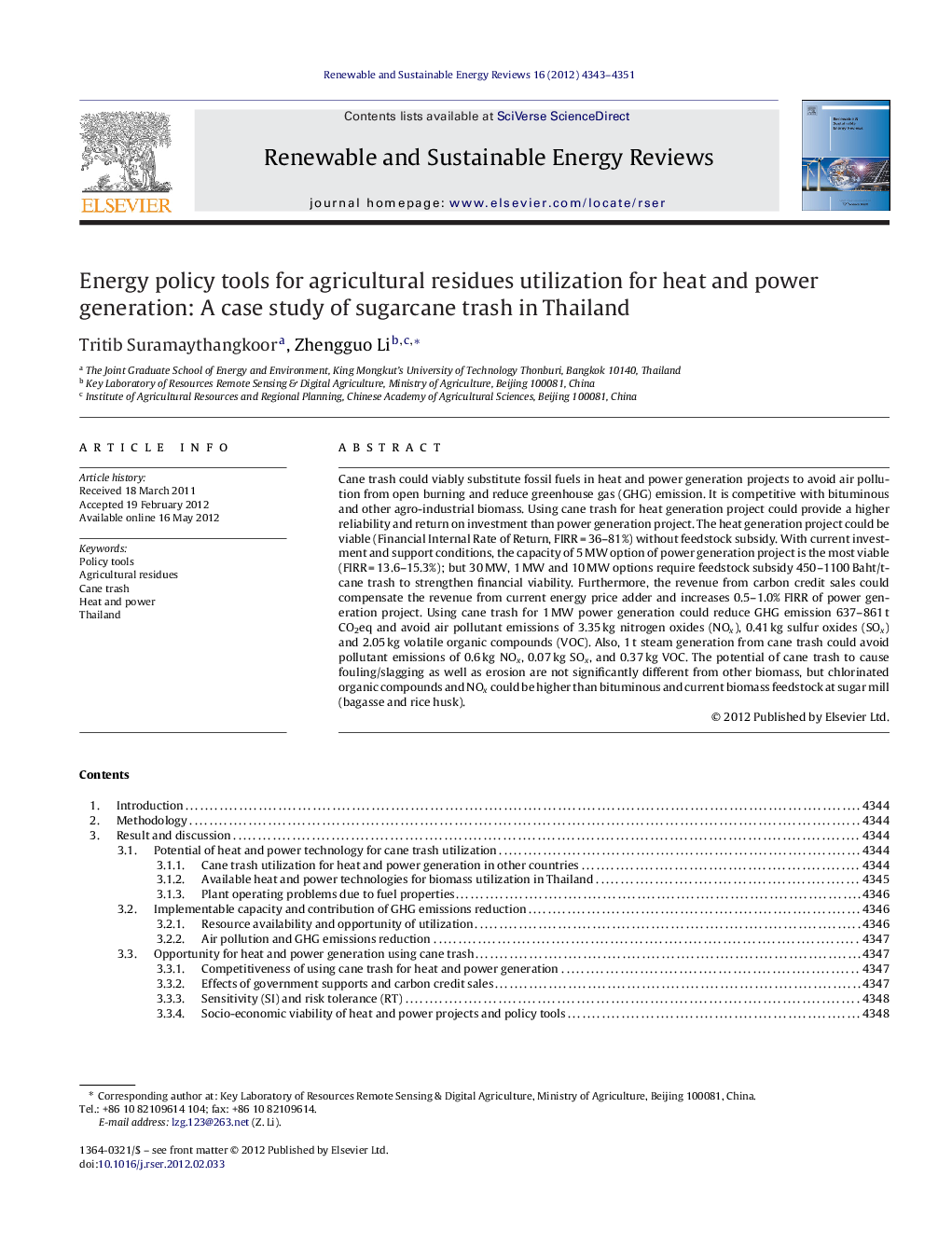| Article ID | Journal | Published Year | Pages | File Type |
|---|---|---|---|---|
| 10689926 | Renewable and Sustainable Energy Reviews | 2012 | 9 Pages |
Abstract
Cane trash could viably substitute fossil fuels in heat and power generation projects to avoid air pollution from open burning and reduce greenhouse gas (GHG) emission. It is competitive with bituminous and other agro-industrial biomass. Using cane trash for heat generation project could provide a higher reliability and return on investment than power generation project. The heat generation project could be viable (Financial Internal Rate of Return, FIRRÂ =Â 36-81%) without feedstock subsidy. With current investment and support conditions, the capacity of 5Â MW option of power generation project is the most viable (FIRRÂ =Â 13.6-15.3%); but 30Â MW, 1Â MW and 10Â MW options require feedstock subsidy 450-1100Â Baht/t-cane trash to strengthen financial viability. Furthermore, the revenue from carbon credit sales could compensate the revenue from current energy price adder and increases 0.5-1.0% FIRR of power generation project. Using cane trash for 1Â MW power generation could reduce GHG emission 637-861Â t CO2eq and avoid air pollutant emissions of 3.35Â kg nitrogen oxides (NOx), 0.41Â kg sulfur oxides (SOx) and 2.05Â kg volatile organic compounds (VOC). Also, 1Â t steam generation from cane trash could avoid pollutant emissions of 0.6Â kg NOx, 0.07Â kg SOx, and 0.37Â kg VOC. The potential of cane trash to cause fouling/slagging as well as erosion are not significantly different from other biomass, but chlorinated organic compounds and NOx could be higher than bituminous and current biomass feedstock at sugar mill (bagasse and rice husk).
Related Topics
Physical Sciences and Engineering
Energy
Renewable Energy, Sustainability and the Environment
Authors
Tritib Suramaythangkoor, Zhengguo Li,
